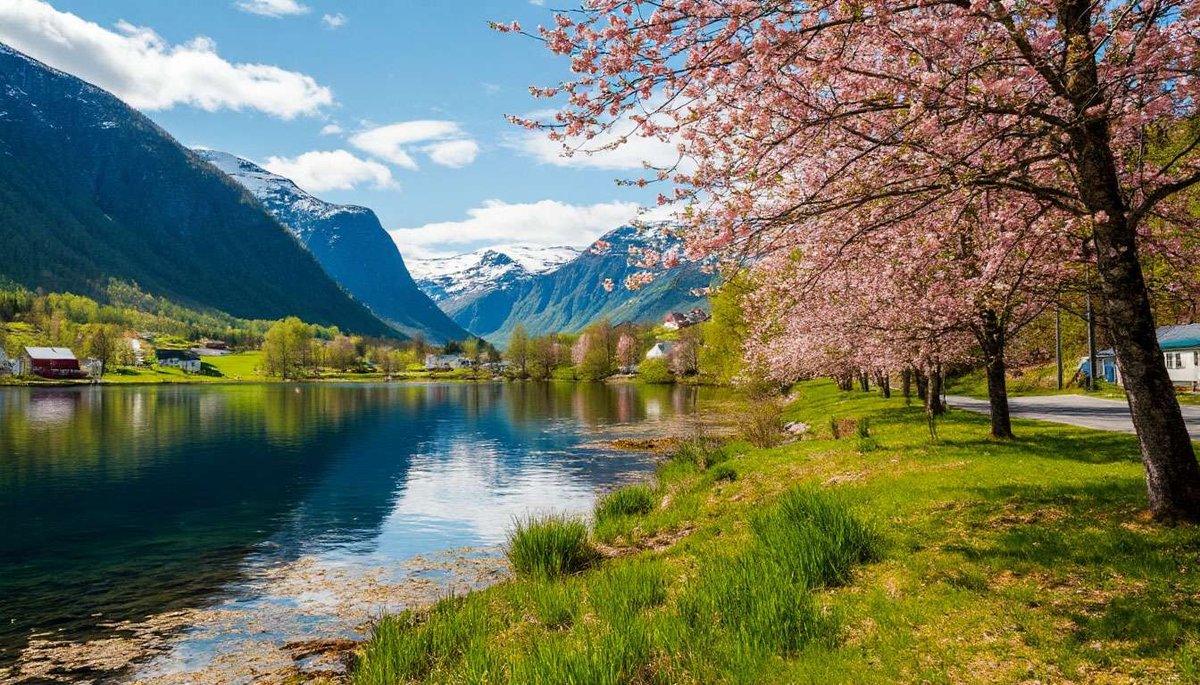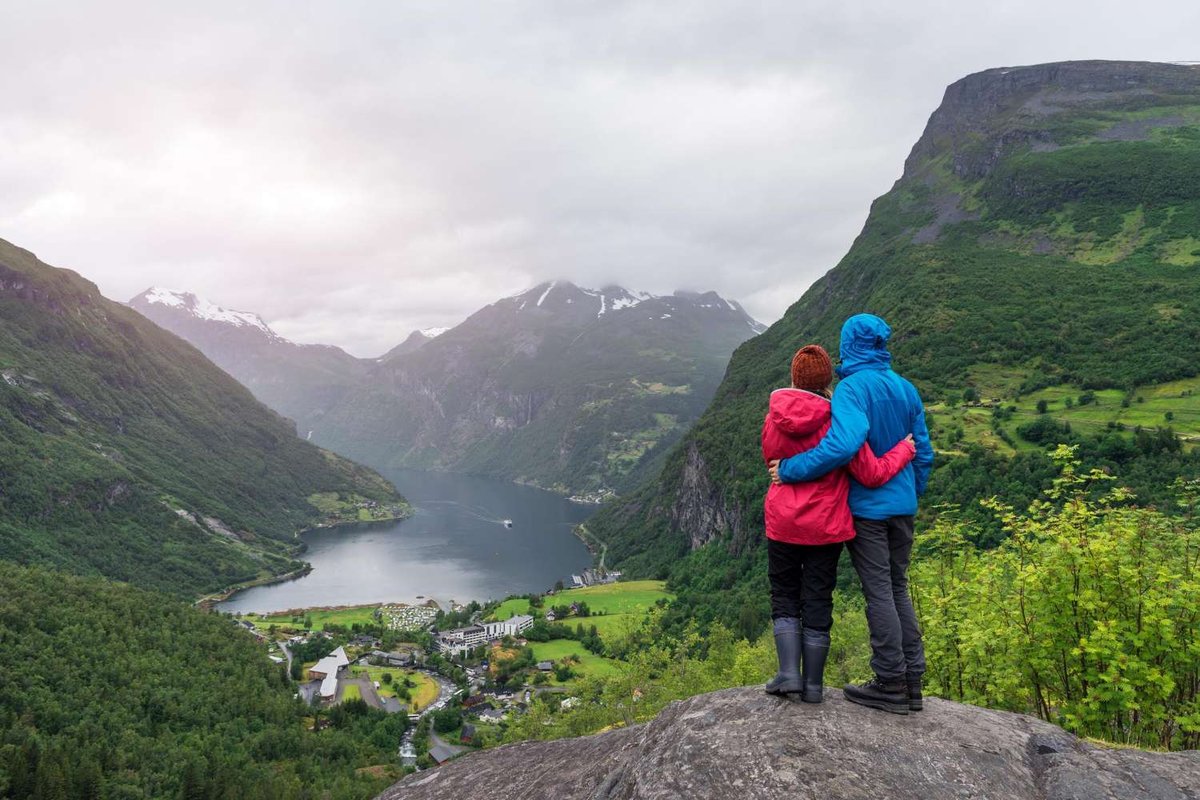📅 How to choose the perfect time of year to travel to Norway: a detailed guide by season and month
The question ‘When is the best time to visit Norway?’ is on every tourist's mind. In summer, there are white nights and crowded fjords, while winter brings the Northern Lights and ski slopes. Autumn and spring are attractive due to lower costs, but the off-season can be daunting due to unpredictable weather. We have analysed each month and season, compared prices, climatic conditions, tourist peaks and hidden advantages so that you can easily choose the perfect time for your holiday style. In this article, we will refer to the categories ‘Weather and seasons’, ‘Events and festivals’, ‘Prices and costs’, ‘Nature, national parks and outdoor activities’, and ‘Winter sports’.

10 FAQs about choosing the perfect time to travel
1. When is the high and low season in Norway?
The high season lasts from June to August and includes the Christmas holidays and Easter: this is the period of the longest days, stable weather and festivals. Hotel and ticket prices rise by 50-70%, especially in Lofoten, Bergen and on the route to Geirangerfjord. The low season is October–November and March–April, when the weather is unstable and tourist activity is minimal. The off-season (May and September) offers moderate prices, good weather windows and more space on popular routes. For more information, see the ‘Weather and seasons’ section.
2. Why are June and early July the best time to travel to the fjords?
The first half of summer offers the perfect balance of weather conditions and tourist traffic. It is already warm in early June, with average temperatures reaching +17°C, and rain is rare. The polar day in the north of the country allows for long excursions and hikes.
The tourist peak only begins after 20 July, so at the beginning of the month you can climb Preikestolen or drive along the Trollstigen road without queuing. The weather in June and July by region is described in detail in the ‘Weather and seasons’ section, and routes and activities are listed in the ‘Fjords and cruises’ category.
3. Which month is ideal for travelling to see the Northern Lights?
February and March are the best months for hunting the Northern Lights. January storms and cloud cover give way to stable weather with minimal precipitation.
At this time, the snow reflects the light, enhancing the effect of the aurora, and the temperature does not drop below a comfortable -10°C. There are significantly fewer tourists than in December, and it is easier to book places on tours. To monitor forecasts, use the services in the Northern Lights and Astronomy section, and for details on winter activities, see Winter Sports.
4. Which months are the most budget-friendly for travel?
The cheapest months are October-November and late January-February (after the Christmas peak). During this time, you can find discounts of up to 40% on hotels, car rentals and domestic flights. Museums and ferry companies offer low season discounts, and restaurant prices are reduced due to fewer tourists. However, keep in mind that some attractions may operate on a reduced schedule or be closed. See the ‘Prices and costs’ and ‘Budget tips’ sections for price tables and seasonal discounts.
5. What are the advantages of travelling to Norway in spring (April-May)?
Spring in Norway is a time of awakening for nature: the fjords are free of ice, but there are no tourists yet. In May, apple orchards bloom in Hardanger, many mountain trails open, and waterfalls are at their fullest. Daytime temperatures are around +10–15°C. In April, the ski season continues in the north, and the sun is already quite warm, allowing you to combine winter and summer activities. May is ideal for hiking in the southern regions. For recommendations on choosing spring routes, see the section ‘Nature, national parks and active recreation’.

6. Why choose autumn for a trip to Norway?
Autumn means golden forests, soft light and low prices. September is especially good: it is still warm, there are few tourists, and the landscapes take on unique shades. October is ideal for viewing the northern lights in Tromsø, and November is perfect for food festivals. In autumn, there are fewer people on the routes, creating ideal conditions for photo shoots and a relaxing holiday. A comparison of weather conditions by month and advice on clothing for autumn are described in the ‘Weather and seasons’ section.
7. When is the best time to go to Norway if you want to catch the main festivals and events?
The festival season peaks in the summer months and December. In June, Bergen hosts the largest music festival, in July there is a jazz festival in Molde and the Viking Festival in Stavanger. August is packed with cultural events in Oslo and Trondheim. December is famous for its Christmas markets, which are especially vibrant in Bergen and Tromsø. For a full calendar of major festivals and cultural events, see the Events and Festivals section.
8. What are the special features of winter travel in Norway?
In winter, temperatures in the north drop to -20°C, but the south of the country (Oslo, Bergen) rarely gets colder than -5°C. In winter, Norway offers unique leisure activities: the ski resorts of Hemsedal and Trysil, snowmobile and husky safaris, and northern lights viewing. Snow chains or studded tyres are mandatory, and daylight hours in the north last only 3-4 hours. All winter activities are described in detail in the ‘Winter sports’ section, and tips on clothing and winter driving can be found in the ‘Useful tips for travellers’ category.
9. When is the best time of year to see whales in Norway?
The best time for whale watching is November to February in the Tromsø, Lofoten and Vesterålen areas. During this period, pods of killer whales and humpback whales come here, attracted by the mass migration of herring.
Tour operators guarantee a 95% chance of sightings. In spring and summer, whales migrate further north and are rarely seen. For more information on sea safaris, see the section ‘Nature, national parks and outdoor activities → Fishing and sea safaris’.
10. When is the best time to go fishing in Norway?
Fishing is available all year round, but the best periods are February to April for cod in Lofoten and June to August for salmon and sea trout. Crab and halibut fishing is popular in September and October.
Seasonality, permits, licence costs and the best fishing spots are described in detail in the section ‘Nature, national parks and outdoor activities → Fishing and sea safaris’.

Choosing the right season will turn your trip to Norway from a good holiday into an unforgettable experience. Catch summer white nights, winter auroras and spring waterfalls, combine different activities and avoid tourist traps with our tips. Use our detailed month-by-month guides, check the weather and seasonal prices, and Norway will always reveal itself to you at just the right moment.





1 comment
Log in to leave a comment